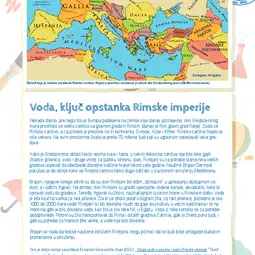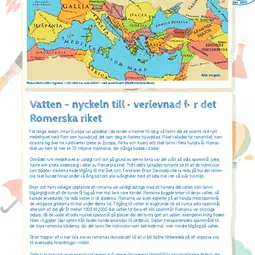Water, key to survival of Roman Empire
11 December 2014
A long time ago, before Europe was divided into the countries we know today, there was a massive empire around the Mediterranean Sea, with its capital in the (now Italian) city of Rome. It was called The Roman Empire. It was home to over 70 million people, many living in cities, stretched over three continents (occupying parts of Europe, Africa and Asia), and it lasted for many centuries. Since the Mediterranean region is often very dry, it was not easy to grow food, such as grain (wheat, oats and other cereals), in some parts of the Empire. Yet, the Romans managed to ensure that the people in their cities had enough food all year round. Scientist Brian Dermody wanted to find out how the Empire survived for so long in the challenging environment of the Mediterranean. Brian and his colleagues discovered that Romans were very good at managing the water they had available and at trading food. For example, Romans built bridges for water, called aqueducts, to bring water into cities. They were also experts in trading grain, the most important food crop in Roman times. Water is crucial to grow grain as you need between 1000 and 2000 litres of water to grow just one kilogramme of grain! The Romans were clever enough to cultivate this crop in larger quantities in places where there was a lot of water available, such as in the basin of the river Nile in Egypt (where water from the river could be used for agriculture). They would then transport it to Rome and other cities of the Empire, where there were more people to feed but less water available. Brian hopes that lessons learnt from the Romans can help us to adapt better to future changes in the environment.Print version

This is a kids' version of the EGU article: 'Water, key to survival of Roman Empire'. It was written by Bárbara Ferreira and reviewed for scientific content by Anne Jefferson (Assistant Professor, Kent State University, US) and Alice Aubert (Postdoc, Justus-Liebig-Universität Gießen, Germany) and educational content by Rachel Hay (Education Officer, Royal Scottish Geographical Society, UK), respectively.
Translations









All English-language Planet Press releases are carefully edited, reviewed and proofed, by scientists, educators and EGU staff. Please note that once translated, Planet Press releases receive no further checks from EGU staff. For this reason, we cannot guarantee their accuracy, though we trust the quality of our voluntary translators and are grateful for their work.

